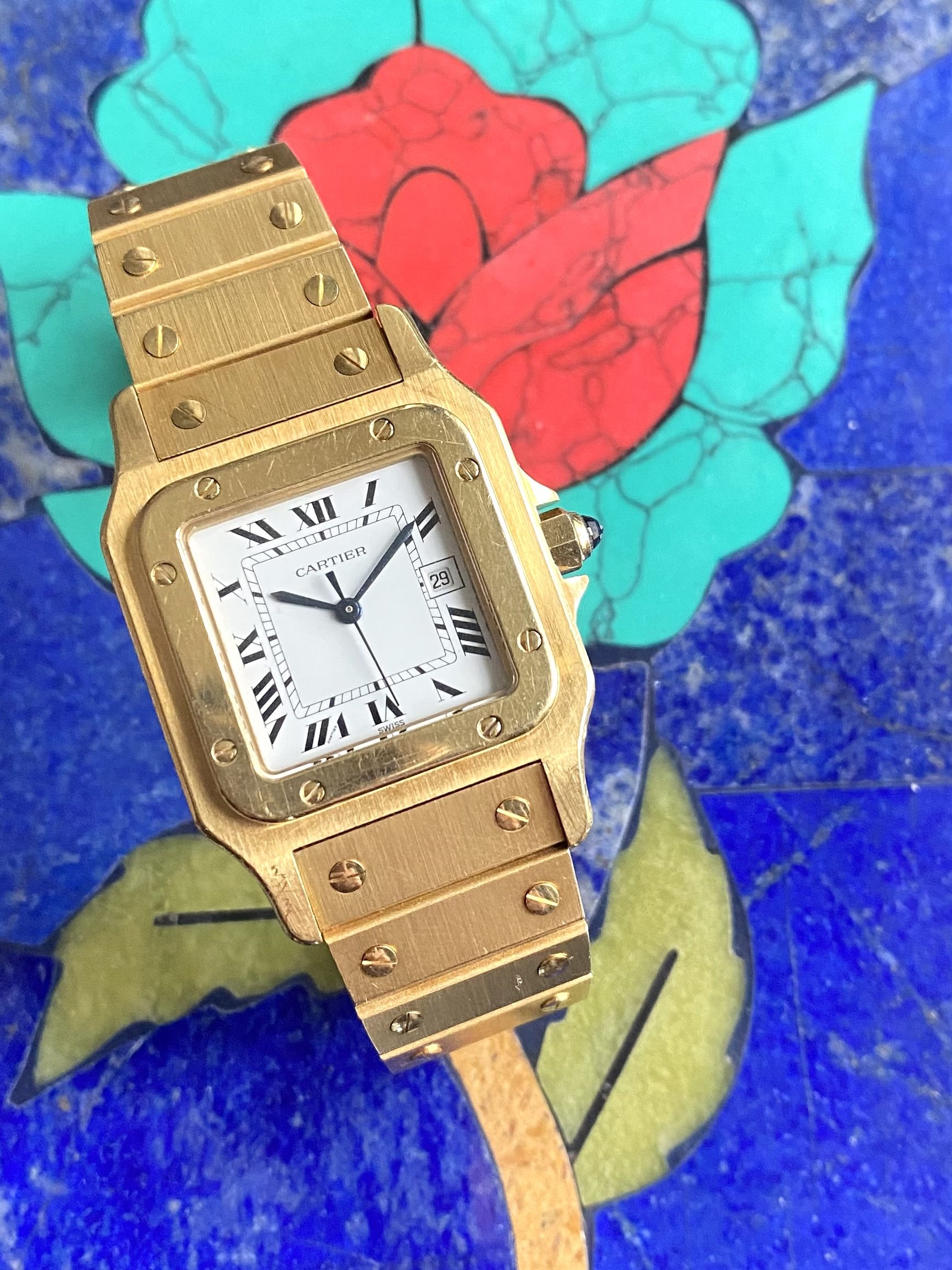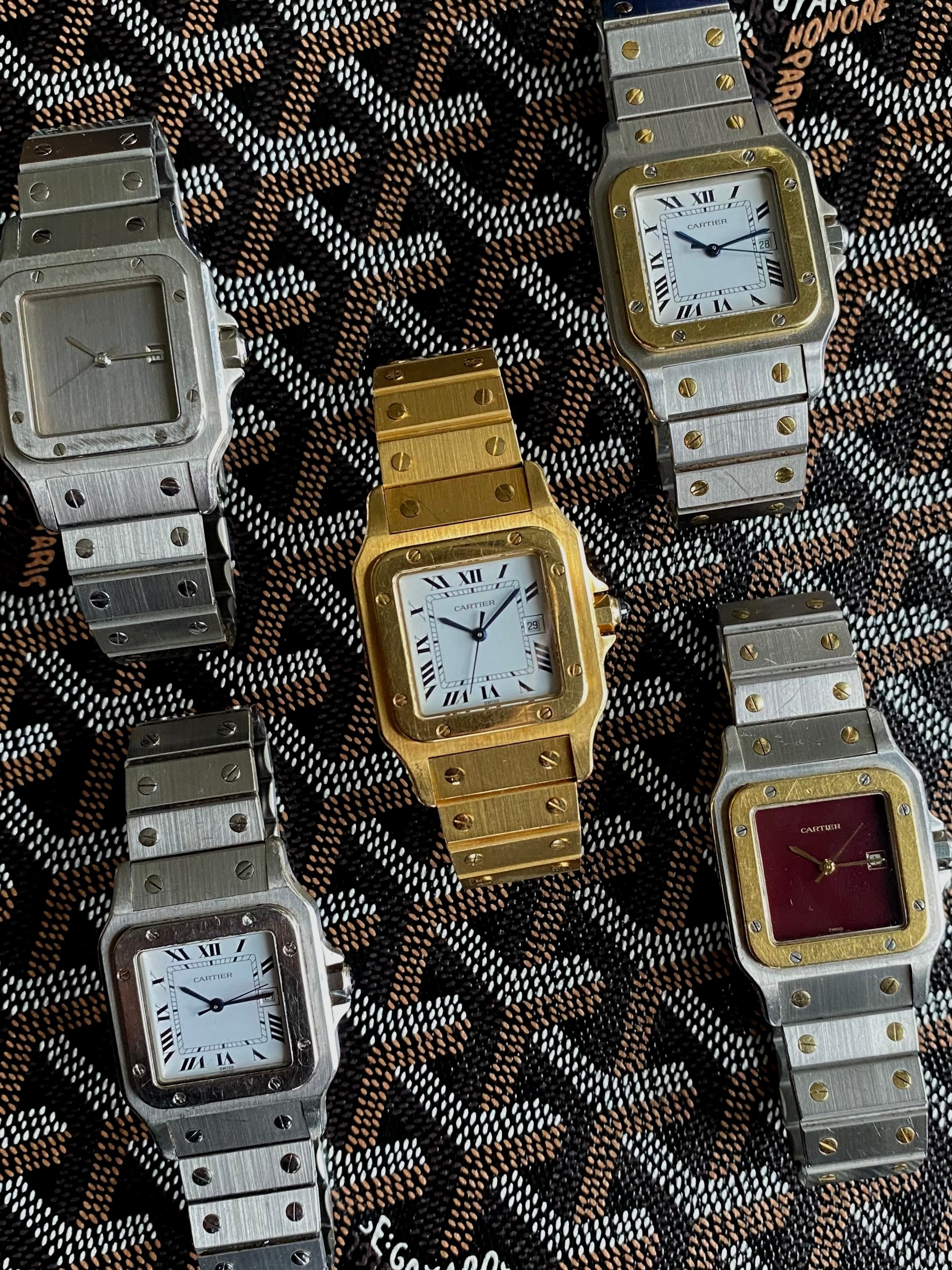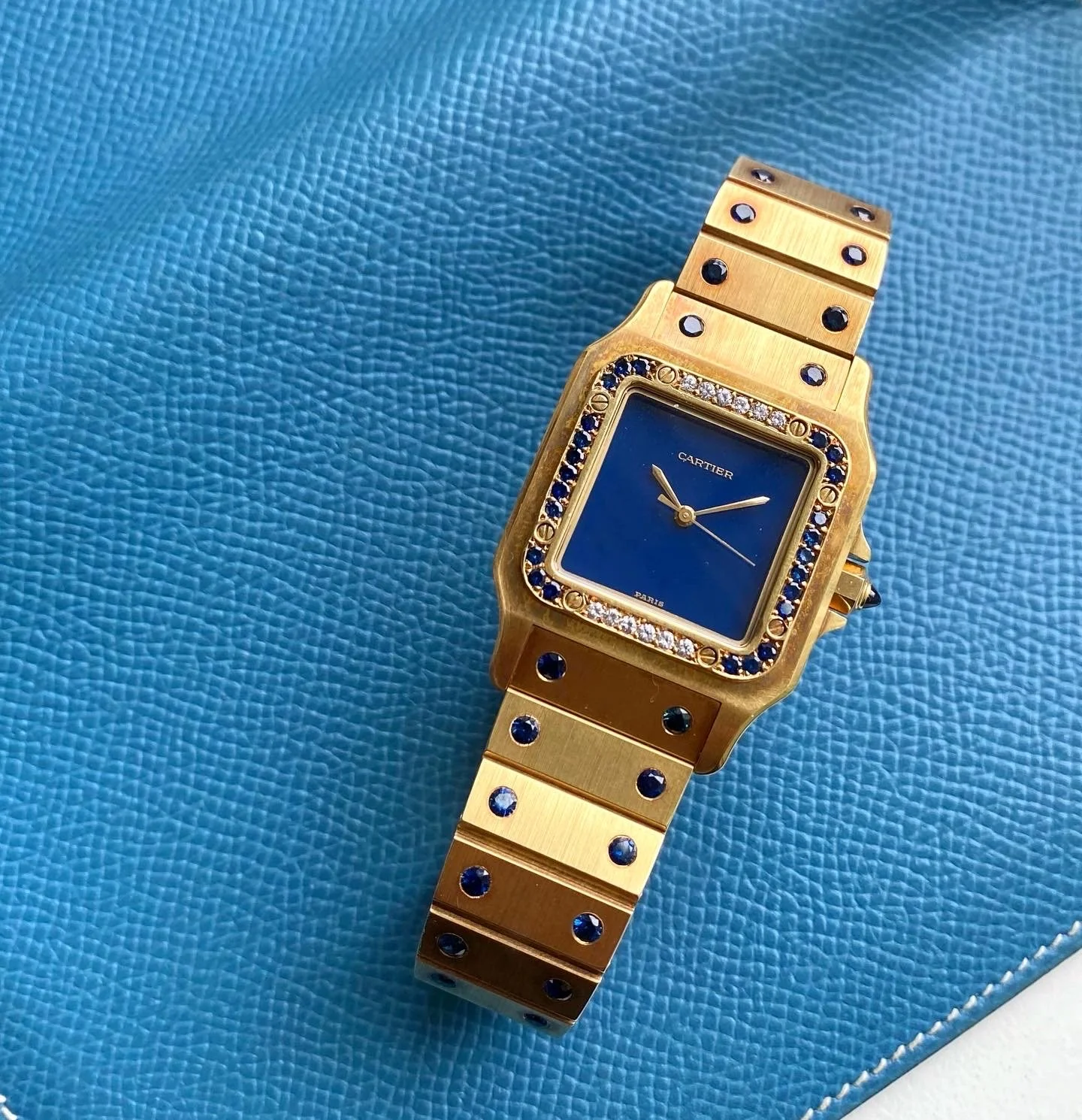Cartier Gems - Santos Deluxe
Continuing the Santos conversation with a look at the most impressive vintage examples money can buy
By J. Heffner - pinaplwtchs
Daniel Matatov’s personal 80s Cartier Santos reference 2960s. Left: White roman dial. Right: Slate dial.
Early last year, good friend and professional dealer Danny Matatov and I published one of our most cohesive articles to date. The topic - how explosive the vintage Santos market has become, and how to dive into the deep end as a collector.
As that article became increasingly more relevant in the ever-changing watch market, we recognized the need for an update to this series. Afterall, these Santos references have quickly become a vintage ‘must’.
Our continued love of both the vintage Santos and Cartier catalog is not just a centralized niche, but a growing sentiment amongst enthusiasts. Because of this, I’m so excited to share this deep dive into the rarities and luxe corners of this market. Through the expertise and careful eye of DVW, the watches mentioned today have been carefully selected as diamonds in the rough. While I’d love to own them all, I feel my bank account would disagree.
Without any further deliberation, let’s jump into this ‘chapter 2’ of the vintage Santos series.
The *Golden* Elephant in the Room
This is the piece that every Santos lover seeks to merely experience in the metal once, let alone to own one. Without a doubt, the keystone of today’s article is this very special 2960 reference Santos in solid gold.
Easily the center of the room / Credit: DVW
The 2960 is commonly known as the Santos reference that’s constructed of one metal throughout. While the 2961 Santos pieces are two tone, the 2960 features one metal construction (either steel or gold). This reference number is restricted to the metal designation, and independent of the dials housed by these watches. This solid gold example is equally as classic as it is beautiful.
Because of their cult-like following, the pricing behind these pieces are based on rarity, materials, and condition. That being said, I would shy away from any that don’t meet at least two of these criteria.
Many collectors appreciate the beauty of old gold, yet some are unaware of the pop-culture significance of this specific Santos reference. Featured on the wrist of Wall Street character Gordon Gekko, it’s no surprise that the Solid Gold Santos has become closely associated with an ostentatious, lavish lifestyle.
Dials, Dials, Dials…
The rarity and desirability of a specific Santos are attributed mainly to its dial.
Personally, I have noticed more burgundy and white Roman dials posted in the wild. There is, however, a third option - the brushed gray dials. A bit darker in tone to the Rolex ‘ghost’ counterparts, these examples often feature the golden ‘Cartier’ text, and are most at home in both the steel and two tone references.
The whole lineup is rare to see all in one photo / Credit: DVW
Laquered red on the left, unique market bracelet on the right Credit: DVW
These colored dials are rumored to have been a product of the ‘must’ era, similar to the dials found in the Must Tanks. The burgundy examples are constructed of a glossy lacquer, one that is prone to ‘spidering’ over time.
While this trio of dials are the most common, some examples exist that are so uncommon you begin to wonder if they’re custom pieces. Take this incredibly rare and well preserved blue ‘gem’ as an example -
The perfect watch doesn’t exist… Credit: DVW
A solid gold case houses a deep lapis blue dial crowned with matching sapphire and diamond stone accents. Pieces like these make the already impressive solid gold example look like a common-man’s watch, and one could only imagine who donned this beaut in its past life.
Personally, while the head of the watch is an impressive specimen of its own, I appreciate the bracelet for its design and stone work. Instead of the classic Santos screws, we are met with matching sapphire stones to those on the bezel. Overall, I believe this dramatically adds to the beauty of this already eccentric piece.
A Market Update
While there are just a few different configurations of the vintage Santos widely available on the market, the pricing structure remains more sporadic.
We watched as the Santos dramatically increased in both value and popularity. Now, their market value seems to have returned a bit more to Earth.
The two tone, white Roman configuration is easily the most common and accessible for collectors, and appears to be hovering around the $3,000 mark. Sure, expect to pay a pretty penny for mint, fully linked, or just prime unpolished examples (something you’ll discover is quite rare in the Santos lineup). Solid metal references command higher premiums, whether that’s steel or gold (obviously). If you’re in need of a colored dial variant, again expect to pay more.
A phenomenal slate dial example in unpolished condition / Credit: DVW
It seems that the buyer experience boils down to two distinct routes with these watches. You could easily hunt the corners of the internet for the best deal (Facebook groups, Reddit, eBay) and buy one for a great price. You may come to realize this route may save you some money, but ultimately your watch may have replaced parts, poor movement, excessive polishing, and no buyer support. Option two is consulting a dealer or reputable seller in the space, pay a little extra, and have the guarantee of a nicer example. Personally, I believe the Cartier Santos is a watch you shouldn’t skimp out on. Don’t get me wrong, eBay is great for barn find Seikos, but the Cartier Santos in this sense is a watch where you get what you pay for.







